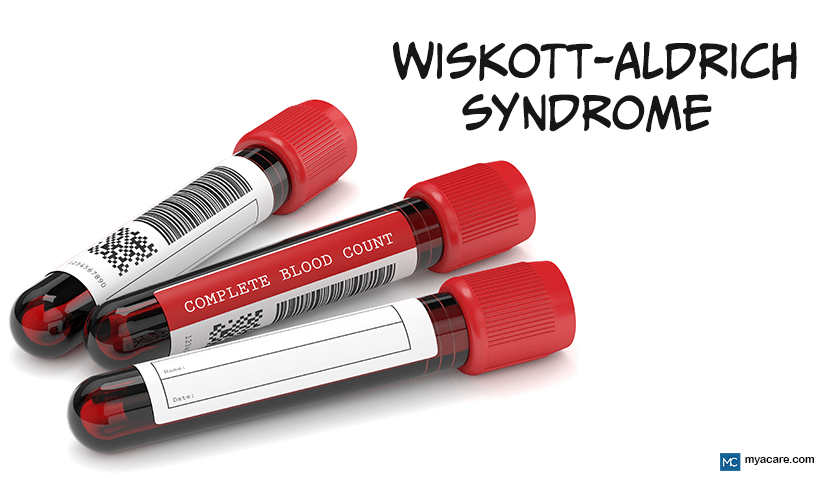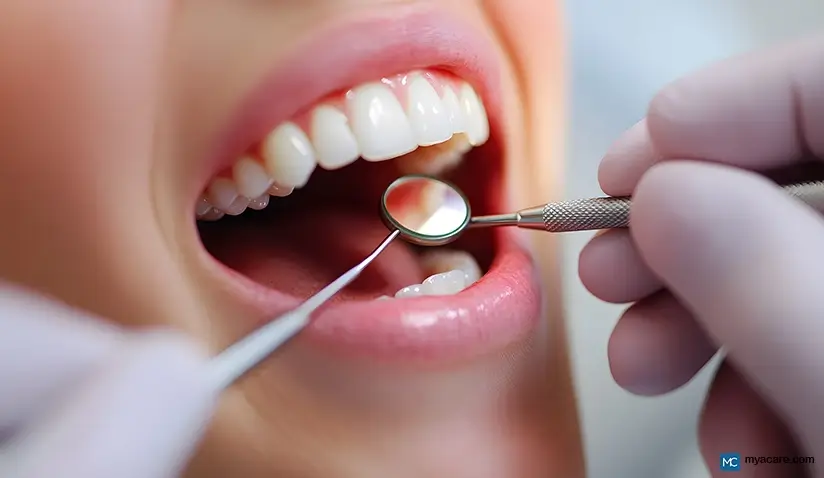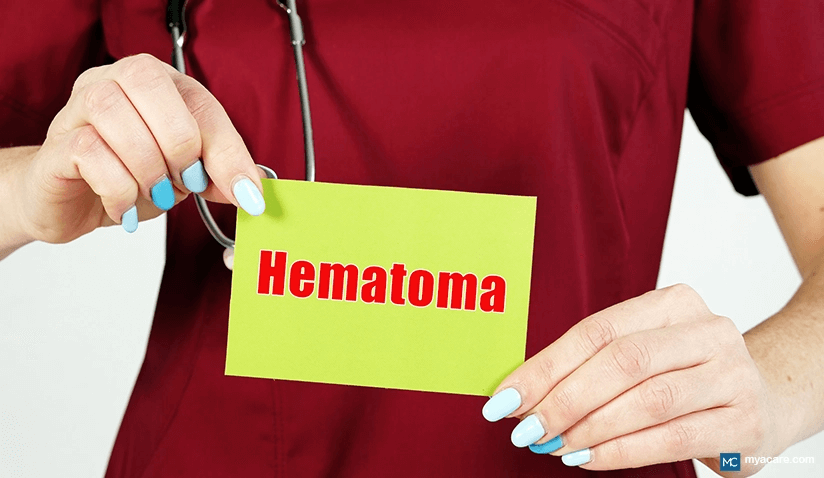Wiskott-Aldrich Syndrome: Causes, Symptoms, and Treatments

Medically Reviewed by Dr. Sony Sherpa, (MBBS)
Wiskott-Aldrich Syndrome is a rare primary immunodeficiency disorder primarily affecting males due to its X-linked recessive pattern. This genetic condition mainly affects the immune system and platelets, which increases susceptibility to infections, bleeding complications, and autoimmune diseases. The syndrome is caused by mutations in the WAS gene, which is vital for the proper functioning of immune cells and the formation of platelets.
WAS is an uncommon disorder with an estimated incidence of 1 to 10 cases per million males worldwide. Early diagnosis remains critical, as delayed recognition can lead to life-threatening complications.
What is Wiskott-Aldrich Syndrome?
Wiskott-Aldrich is a primary immunodeficiency syndrome characterized by a triad of symptoms, namely eczema, thrombocytopenia (low platelet count), and immunodeficiency. This complex inherited disorder leads to significant challenges in fighting infections, controlling bleeding, and managing inflammatory and autoimmune complications.
What Are the Organs Affected by Wiskott-Aldrich Syndrome?
While Wiskott-Aldrich Syndrome primarily affects the immune system and blood (platelets), it impacts multiple organ systems due to widespread immune dysfunction and bleeding tendencies.
Key affected organs and systems include:
- Bone Marrow: This is where immune cells and platelets are produced. The core defect in WAS begins here, leading to abnormal immune cell development and microthrombocytopenia.
- Spleen: Often enlarged (splenomegaly) due to its role in filtering defective blood cells and managing immune responses.
- Skin: Eczema and recurrent skin infections are hallmark features.
- Lymphatic System: Prone to cancers like lymphoma due to chronic immune dysregulation.
- Gastrointestinal Tract: Autoimmune issues, such as inflammatory bowel disease (IBD), can cause chronic digestive symptoms.
- Respiratory System: Frequent infections, like pneumonia and sinusitis, affect the lungs and airways.
Is Wiskott-Aldrich Syndrome a B-Cell or T-Cell Disorder?
WAS affects both B cells and T cells, leading to combined immunodeficiency. The mutation in the WAS gene impairs T-cell signaling and migration, affecting the body’s ability to mount an effective immune response. Additionally, B-cell function is disrupted, leading to abnormal antibody production. This dual deficiency contributes to the increased susceptibility to infections seen in patients with WAS.
Which Immunoglobulin is Decreased in Wiskott-Aldrich Syndrome?
A key immunological feature of WAS is an abnormal immunoglobulin profile. To understand this better, it is helpful to look at the roles of the main antibody types involved in immune defense. IgM is the first antibody produced during an immune response, playing a vital role in the initial defense against infections. Following this early response, IgA contributes by defending mucosal surfaces, such as those in the respiratory and digestive tracts, acting as a critical barrier to invading pathogens. In specific immune responses, IgE becomes important, particularly in allergic reactions and in defending the body against parasitic infections. Finally, IgG, the most abundant antibody in the bloodstream, provides long-term immunity and sustained protection against pathogens the body has previously encountered.
Patients with WAS typically show:
- Decreased IgM - leading to impaired early immune responses.
- Elevated IgA and IgE - which may contribute to allergic reactions and eczema.
- Normal or slightly reduced IgG - though functional antibody responses can still be impaired.
This disruption in immunoglobulin levels impairs immunity, raising the risk of infections and autoimmune conditions.
What Causes Wiskott-Aldrich Syndrome?
WAS gene mutations on the X chromosome (Xp11.22–p11.23) cause Wiskott-Aldrich Syndrome. The WASP protein encoded by this gene is essential for regulating the actin cytoskeleton in hematopoietic cells (bone marrow-derived cells, including immune cells and platelets).
The actin cytoskeleton is essential for:
- Immune cell movement and communication.
- Proper formation of the immune synapse (the connection between immune cells and their targets).
- Platelet development and function.
Mutations in the WAS gene lead to a dysfunctional or absent WASP, resulting in:
- Impaired T-cell activation and proliferation.
- Defective B-cell function, reducing antibody responses.
- Abnormal platelet formation, leading to microthrombocytopenia.
Inheritance Pattern
WAS follows an X-linked recessive inheritance pattern, meaning:
- Males (who have one X chromosome) are primarily affected.
- Females (with two X chromosomes) are typically asymptomatic carriers but have a 50% chance of passing the mutated gene to their offspring.
It is advisable for females who are carriers to undergo genetic testing and counseling to assess reproductive risks.
Different Forms of Wiskott-Aldrich Syndrome
WAS presents with varying degrees of severity, depending on the specific mutation in the WAS gene. The different forms include:
- Classic Wiskott-Aldrich Syndrome
- The most severe form, characterized by the complete triad of eczema, thrombocytopenia, and immunodeficiency.
- Patients exhibit an increased vulnerability to autoimmune and malignant diseases.
- X-Linked Thrombocytopenia (XLT)
- A milder variant of WAS, where thrombocytopenia is the predominant feature.
- Patients typically do not experience severe immunodeficiency or eczema.
- XLT may still carry a risk of bleeding complications, but has a better prognosis than classic WAS.
- Intermittent thrombocytopenia, characterized by fluctuating platelet counts over time, is commonly observed in mild cases of X-linked thrombocytopenia (XLT) and reflects the variable clinical expression associated with Wiskott-Aldrich Syndrome mutations.
- X-Linked Neutropenia (XLN)
- A rare variant caused by specific WAS gene mutations leading to neutropenia (low neutrophil count).
- This form increases susceptibility to bacterial infections but may not present with the full WAS triad.
Symptoms and Complications
Eczema
- Often the first symptom to appear, typically during infancy.
- Can vary from mild to severe atopic dermatitis, leading to itching, redness, skin thickening, and skin breakdown.
- Severe cases may predispose to secondary skin infections.
Thrombocytopenia (Low Platelet Count)
- Leads to easy bruising and prolonged bleeding even after minor injuries or medical procedures.
- Characterized by microthrombocytopenia - small and dysfunctional platelets.
- Symptoms include:
- Small red or purple spots on the skin (Petechiae)
- Ecchymoses (larger bruises)
- Frequent nosebleeds (epistaxis)
- Gum bleeding
- Internal bleeding, such as blood in the urine or stool.
Immune Deficiency
- Patients have a weakened immune system, leading to recurrent bacterial, viral, and fungal infections.
- Common infections include:
- Respiratory infections (pneumonia, bronchitis, sinusitis)
- Ear infections (otitis media)
- Cytomegalovirus (CMV)
- Herpes simplex virus (HSV)
- Epstein-Barr virus (EBV)
- Difficulty clearing common infections often results in frequent antibiotic use and hospitalizations.
Autoimmune Disorders
- The dysfunctional immune system may mistakenly attack the body’s own cells, leading to conditions such as:
- Hemolytic anemia (destruction of red blood cells)
- Immune thrombocytopenic purpura (ITP) (immune-mediated low platelets)
- Vasculitis (inflammation of blood vessels)
- Arthritis (joint inflammation)
- Inflammatory bowel disease (IBD) (chronic digestive tract inflammation)
Increased Cancer Risk
- WAS significantly raises the risk of developing certain malignancies, especially:
- Non-Hodgkin lymphoma
- Leukemia
The combination of immune dysfunction and chronic inflammation may contribute to this increased cancer risk.
Other Symptoms and Complications
- Allergies and Asthma: Heightened risk of food allergies, hay fever, and asthma.
- Skin Infections: Increased susceptibility to viral and bacterial skin infections, such as:
- Molluscum contagiosum
- Bacterial sepsis (life-threatening bloodstream infection)
- Developmental Delays: Some children may experience growth delays or mild learning difficulties, though this varies widely.
Treatment and Management
Effective treatment of Wiskott-Aldrich Syndrome focuses on managing symptoms, preventing complications, and, when possible, correcting the underlying immune deficiency.
Eczema Management
- Topical Corticosteroids: Reduce inflammation and itching, but should be used cautiously due to potential skin thinning with prolonged use.
- Emollients: Keep the skin moisturized, preventing dryness and reducing flare-ups.
- Antihistamines: Help control itching and allergic reactions.
- Topical Immunosuppressants: Useful for severe eczema but may increase infection risk.
- Management of Secondary Infections: Antibiotics or antivirals are used if skin infections (e.g., herpes simplex or bacterial sepsis) occur.
Managing Bleeding Disorders
- Platelet Transfusions
- Indicated in severe thrombocytopenia or life-threatening bleeding.
- Risks: Alloimmunization (immune response against donor platelets) and transmission of infections.
- Medications to Improve Platelet Function
- Certain drugs may be prescribed to help reduce bleeding during dental procedures or surgery.
- Splenectomy (Surgical removal of the spleen)
- Considered in cases of severe, persistent thrombocytopenia that is unresponsive to other treatments.
- Benefits: Improves platelet count.
- Risks: Increases susceptibility to infections; patients require lifelong antibiotic prophylaxis and vaccination against encapsulated bacteria (e.g., pneumococcus, meningococcus).
Infection Prevention and Treatment
- Prophylactic Antibiotics or Antifungal Prophylaxis
- Regular use helps prevent bacterial and fungal infections.
- Prompt Treatment of Infections
- Early antibiotic or antiviral treatment is essential to prevent complications.
- Intravenous Immunoglobulin (IVIG) Therapy
- Provides passive immunity by supplying antibodies, reducing infection frequency.
- Side Effects: Headaches, chills, or allergic reactions in some patients.
- Systemic Steroids or High-Dose Immunoglobulin Replacement Therapy
- Used in cases of severe autoimmune complications, but can increase infection risk.
Immunomodulatory Therapies
- Immunosuppressive Medications
- For controlling autoimmune complications like autoimmune hemolytic anemia or vasculitis.
- Risks: Increased susceptibility to infections and possible long-term organ toxicity.
Hematopoietic Stem Cell Transplantation (HSCT) (Bone Marrow Transplant)
- Curative Treatment: Replaces the patient’s defective immune system with healthy donor stem cells.
- Best Outcomes: Performing the procedure before age 5 yields higher survival rates and fewer complications.
- Risks:
- Graft-versus-host disease (GVHD)
- Infections due to immune suppression
- Graft failure
- Long-term organ damage
Types of HSCT:
- Matched Sibling Donor (MSD) Transplant:
- Highest success rates and lowest complication risks.
- Matched Unrelated Donor (MUD) Transplant:
- Viable if no sibling donor is available, but carries higher risks of rejection and GVHD.
- Umbilical Cord Blood Transplant:
- An alternative for patients lacking a matched donor; suitable for younger children but associated with delayed engraftment.
Gene Therapy (Emerging Treatment)
- An alternative for patients without a suitable stem cell donor.
- Involves inserting a corrected version of the WAS gene into the patient’s own stem cells, restoring WAS protein production.
- Benefits: Reduces symptoms and improves immune function.
- Current Status: Early trials show promising results, but long-term safety and effectiveness are still being studied.
Precautions for Wiskott-Aldrich Syndrome
Managing WAS requires a proactive approach to prevent infections, manage symptoms, and reduce complications.
Infection Prevention
- Vaccinations:
- Essential for protection against common infections, but live vaccines (e.g., MMR, varicella, oral polio) are contraindicated due to immune deficiency, as they can cause infection in immunocompromised individuals.
- Inactivated vaccines (e.g., influenza, pneumococcal) are safe and recommended.
- Good Hygiene Practices:
- Frequent handwashing, proper wound care, and avoiding contact with sick individuals help reduce infection risks.
- Avoid Crowded Places:
- Especially during flu season or outbreaks, to minimize exposure to contagious illnesses.
- Antibody Infusions (IVIG):
- Regular intravenous immunoglobulin provides passive immunity, helping prevent severe infections.
Eczema Management
- Routine Skin Care:
- Daily use of emollients and prescribed corticosteroids to reduce inflammation and prevent skin breakdown.
- Infection Prevention:
- Prompt treatment of skin infections to prevent systemic spread.
Bleeding Risk Management
- Avoidance of High-Risk Activities:
- Activities with a high risk of injury or bruising should be limited due to thrombocytopenia.
- Use of Protective Gear:
- Helmets and padding during sports or physical activities to prevent injuries.
- Medication Caution:
- Avoid drugs that impair platelet function, such as NSAIDs and certain anticoagulants.
Monitoring and Long-Term Management
- Autoimmune Complications:
- Regular check-ups to detect and manage autoimmune disorders like ITP or vasculitis.
- Cancer Surveillance:
- Increased risk of lymphoma and leukemia requires routine screening and early intervention.
- Multidisciplinary Care Team:
- Immunologists, hematologists, dermatologists, and other specialists work together to manage the complex needs of WAS patients.
Living with Wiskott-Aldrich Syndrome
Prognosis and Life Expectancy
- Early Diagnosis and Hematopoietic Stem Cell Transplantation (HSCT):
HSCT significantly improves survival rates, especially when performed at a younger age. Without HSCT, the median life expectancy is around 15 years, but with successful transplantation, many patients live into adulthood.
Is Wiskott-Aldrich Syndrome Fatal?
- Yes, if left untreated, WAS can be fatal due to severe infections, bleeding complications, or cancer development.
- Early treatment, especially HSCT, drastically improves survival outcomes.
- Severe Infections (due to immune deficiency) and malignancies (particularly lymphomas) are the leading causes of mortality in WAS patients.
Latest Research and Advances in Wiskott-Aldrich Syndrome
In recent years, significant progress has been made in understanding and treating Wiskott-Aldrich Syndrome, particularly in gene therapy, drug development, and hematopoietic stem cell transplantation (HSCT).
Advancements in Gene Therapy
- Clinical Successes: Gene therapy has shown promising results in treating WAS. A clinical trial reported that five young boys experienced sustained improvement in symptoms following gene therapy, with benefits lasting for years.
- Innovative Treatments: In a notable case, a child in Spain was cured of WAS through gene therapy. This treatment involved replacing the defective gene with a healthy one using a modified virus, marking a significant milestone in gene therapy applications.
- Long-Term Efficacy: Studies have demonstrated that gene therapy can provide lasting benefits. Research following patients for up to nine years post-treatment showed stable engraftment of corrected cells and significant reductions in infections, eczema, autoimmunity, and bleeding episodes.
New Drug Therapies
- Immune System Regulation: While gene therapy and HSCT are primary curative approaches, research into pharmacological treatments that can modulate the immune response in WAS patients is ongoing. These therapies aim to manage symptoms and reduce complications associated with immune dysregulation.
- Cytoskeletal Restoration: Given that the syndrome involves defects in the WAS protein affecting cytoskeletal organization in immune cells, potential drug therapies are being explored to restore proper cytoskeletal function. These treatments could improve cell signaling and immune responses.
Improvements in Hematopoietic Stem Cell Transplantation (HSCT)
- Enhanced Donor Matching: Advancements in HLA typing and donor registries have increased the chances of finding suitable matches, improving HSCT outcomes for WAS patients.
- Reduced Intensity Conditioning: Less invasive conditioning regimens are being developed to prepare patients for HSCT. These approaches aim to reduce treatment-related toxicity while ensuring successful engraftment of donor cells.
Frequently Asked Questions (FAQs)
Do female carriers of Wiskott-Aldrich Syndrome have symptoms?
Female carriers of WAS typically do not exhibit symptoms due to the presence of one normal X chromosome. However, in rare cases, skewed X-chromosome inactivation can lead to mild manifestations, such as thrombocytopenia or eczema.
Is Wiskott-Aldrich Syndrome curable?
A cure for Wiskott-Aldrich Syndrome is possible through Hematopoietic stem cell transplantation (HSCT), which is most successful when performed early with a suitable donor. Additionally, gene therapy has emerged as a promising curative approach, with studies demonstrating sustained benefits and symptom improvement.
Why does Wiskott-Aldrich Syndrome have high IgE and IgA?
Patients with WAS often exhibit elevated levels of immunoglobulins IgE and IgA due to dysregulation of the immune system. The defective WAS protein affects immune cell signaling and function, leading to abnormal antibody production and increased susceptibility to infections and autoimmune manifestations.
To search for the best healthcare providers for Medical Genetics in Germany, India, Saudi Arabia, Singapore, Slovakia, Spain, Thailand, The UAE, The UK and The USA, please use our free Mya Care search engine.
To search for the best Doctors and Healthcare Providers worldwide, please use the Mya Care search engine.
The Mya Care Editorial Team comprises medical doctors and qualified professionals with a background in healthcare, dedicated to delivering trustworthy, evidence-based health content.
Our team draws on authoritative sources, including systematic reviews published in top-tier medical journals, the latest academic and professional books by renowned experts, and official guidelines from authoritative global health organizations. This rigorous process ensures every article reflects current medical standards and is regularly updated to include the latest healthcare insights.

Dr. Sony Sherpa completed her MBBS at Guangzhou Medical University, China. She is a resident doctor, researcher, and medical writer who believes in the importance of accessible, quality healthcare for everyone. Her work in the healthcare field is focused on improving the well-being of individuals and communities, ensuring they receive the necessary care and support for a healthy and fulfilling life.
Featured Blogs



